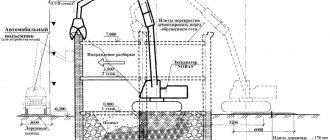4.1. Methods of comparative approach
4.1.1.
The method of direct comparison with an analogous object (sales comparison method) is the main method of the comparative approach, within the framework of which, for valuation purposes, analogous objects are selected that have the most similar characteristics, and then, if there are differences between the analogous objects and the valuation object, adjustments are made to the prices of analogue objects.
4.1.2.
Comparative unit method (calculation method based on a specific price indicator / based on the “price” of a unit of the main pricing parameter) – the comparative unit method involves calculating the cost of reproduction/replacement of a comparative unit (1 unit, 1 kW, etc.) of a similar object. To calculate the full cost of reproduction/replacement of the valued object, the adjusted cost of a comparison unit is multiplied by the number of units.
4.1.3.
The calculation method using correlation-regression models of utility type is used to evaluate a set of similar objects that differ in the values of individual parameters. Mathematically describes the relationship between the main technical and functional parameters and the price (cost) of objects.
Assessment steps
Carrying out assessment work consists of an appropriate algorithm that divides the work into stages:
- Monitoring the segment of the real estate market to which the property being assessed belongs. Particular attention is paid to the value of recently sold properties.
- The collected information on similar objects is verified and sorted, leaving the maximum number of options with similar characteristics.
- Amendments are made taking into account units of comparison, by compensating for missing beneficial properties by reducing the cost or increasing the price when advantages are discovered.
- The resulting preliminary cost is again compared with analogue objects, and additional cost adjustments are made.
REFERENCE: A market segment defines that part of it that interests the appraiser by a set of similar characteristics that are revealed in different units of comparison.
4.2. Selection of analogues
4.2.1.
An analogue object is an object that is similar to the object of assessment in terms of the main economic, material, technical and other characteristics that determine its value (clause 10 of the FSO No. 1).
Classification analogue - the evaluated object and the comparison object belong to the same classification group of machines according to their purpose, operating principle, design and technical characteristics.
Functional analogue - the evaluated object and the comparison object have similar purposes, i.e. they are capable of performing the same functions. At the same time, they may differ in design, principle of operation, and consumed resources.
Cost factors (elements of comparison) are the qualitative and quantitative characteristics of a real estate property, the change of which leads to a change in its value.
Comments on the definition of “analogue object”:
Table 15.
| No. | Definition fragment | A comment |
| 1 | ... similar to the object of assessment ... | The similarity criterion is the difference in the values of the value factors of the valued object and analogous objects. In general: △ TSOP → min , {\displaystyle \triangle _{TSOP}\rightarrow min,} where: △ TSOP {\displaystyle \triangle _{TSOP}} – the difference in the value of the pricing parameter between the valuation object and the analogue object. The threshold value of similarity (analog / not analogue) is determined individually – depends on the values of the pricing parameters of the valuation object, analogue objects and market conditions. |
| 2 | ...according to the main...characteristics... | Main characteristics influencing cost = significant cost factors \rightarrow materiality criterion. The materiality criterion depends on [7, 8]:
|
| 3 | ...and other characteristics... | Other characteristics that go beyond the “economic”, “material” and “technical” groups may include a group of legal characteristics: the scope of rights to the object of assessment and its components, the presence of encumbrances. |
4.2.2.
Criteria for selecting analogue objects:
Table 16.
| No. | Criterion | A comment |
| 1 | Ensuring maximum calculation accuracy | All other things being equal, you should choose such analogues, the differences in the pricing characteristics of which with the object of evaluation can be taken into account as accurately as possible. |
| 2 | Information on analogue objects should describe all significant cost factors. | See paragraph 2 of the table. eleven. |
| 3 | The values of significant cost factors must be close to the object of assessment. | See item 1 of table. 11. The key thing is the coincidence between the object of assessment and the analogous objects of the best use option (NEI). NEI, among other things, determines the assignment of an object to a particular market segment. |
| 4 | The sample of analogue objects should be representative of the current situation on the market. | Representativeness is the correspondence of the characteristics of the data sample used in the calculation to the characteristics of the general population of data as a whole (all potentially available data in a certain market segment). Representativeness determines the extent to which it is possible to generalize the results of a simulation based on a particular sample to the entire population from which it was drawn. With some simplification, the closest analogue of the term “representativeness” from mathematical statistics is “sufficiency” from the legislation on valuation activities. |
| 5 | Sources for obtaining information on analogue objects must be open , or the information must be documented . | |
| 6 | Analogues should be used, the significant difference in price relative to each other can be explained by the known values of cost factors. | The reasons for the difference in prices of analogue objects (taking into account market volatility) must be clear. |
| 7 | Analogues should be used, the differences in cost factors of which can be taken into account in the calculations. | A number of differences in cost factors cannot be taken into account in the calculations due to the lack of necessary analytical and statistical data. It is not recommended to use such analogs in calculations. |
4.2.3.
When valuing machinery and equipment using cost and comparative approaches, it is allowed to use price information about events that occurred with similar objects after the valuation date, for example, through reverse price indexation. In this case, the appraiser must analyze price dynamics from the valuation date to the date of the relevant event and make appropriate adjustments. The use of such price information is permissible if the appraiser carries out and discloses in the report an analysis of the obtained calculated values for compliance with market indicators prevailing on the date of assessment, and also stipulates the assumptions associated with the use of this information (clause 12 of FSO No. 10[8]).
S.V. Grinenko Economics of real estate
Lecture notes. Taganrog: TRTU Publishing House, 2004.
| Previous | Table of contents | Next |
3. Real estate valuation
3.5. Approaches to real estate valuation.
3.5.1. Comparative (market) approach
Comparative approach
to valuation - this is a set of methods for assessing value, based on comparison of the object of valuation with its analogues, for which there is information on the prices of transactions with them.
Conditions for applying the comparative approach:
1. The object must not be unique. 2. Information must be comprehensive, including the terms of transactions. 3. Factors influencing the cost of comparable analogues of the property being valued must be comparable.
The comparative approach is based on the principles:
— substitutions; — balance; - supply and demand.
Stages of the comparative approach:
Stage 1
Market research - an analysis of the state and trends of the market and especially the segment to which the assessed object belongs is carried out; real estate objects are identified that are most comparable to the one being valued and that were sold relatively recently.
Stage 2
Collection and verification of the accuracy of information about analogues of the property being valued that are offered for sale or recently sold; comparison of analogue objects with the object being evaluated.
Stage 3
Adjustment of sales prices of selected analogues in accordance with differences from the object of valuation.
Stage 4
Establishing the value of the valuation object by agreeing on the adjusted prices of analogous objects.
Comparable objects must belong to the same segment and transactions with them must be carried out on conditions typical for this segment:
- exposure period. Exposure period – the time that the object is on the market;
— independence of the subjects of the transaction. Independence means that transactions are not concluded at a market price if the seller and buyer: · are related; · are representatives of the holding and an independent subsidiary; · have other interdependence and mutual interest; · transactions are carried out with objects burdened with collateral or other obligations; · engaged in the sale of real estate of deceased persons, etc.; — investment motivation, which is determined by: · similar motives of investors; · similar best and most efficient use of facilities; · degree of wear and tear of the building.
The main criteria for selecting analogue objects: 1. Ownership rights to real estate. The title adjustment is the difference between market rent and contract rent because full title is determined at market rent and current financing available. 2. Terms of financing the transaction. If the financing conditions of the transaction are atypical, a thorough analysis is required, as a result of which an amendment is made. 3. Terms of sale and time of sale. 4. Location. 5. Physical characteristics.
An adjustment to comparable sales is required to determine the final value of the subject property. Calculation and adjustments are made based on a logical analysis of previous calculations, taking into account the significance of each indicator. The most important thing is to accurately determine the correction factors (see Fig. 3.2).
Rice. 3.2. Types of adjustments
Percentage adjustments
are entered by multiplying the sales price of an analogous object or its unit of comparison by a coefficient reflecting the degree of differences in the characteristics of the analogous object and the object being valued. If the valued object is better than a comparable analogue, then an increasing factor is added to the price of the latter; if worse, a decreasing factor is added.
Cost adjustments:
a) absolute corrections,
added to the unit of comparison, change the price of the sold analogue object by a certain amount, which is estimated at the difference in the characteristics of the analogue object and the object being valued. A positive adjustment is made if the valued object is better than a comparable analogue, a negative adjustment if it is worse;
b) monetary adjustments
, added to the price of the sold analogue object as a whole, change it by a certain amount, at which differences in characteristics are estimated.
Cumulative interest adjustments
are determined by multiplying all individual percentage adjustments.
Amendment in the form of a general grouping
usually used in a developed real estate market where there are a large number of sales. The cumulative adjustment is made within the identified group of comparables.
Sequence of amendments:
1. Adjustment for financing terms. 2. Adjustment for special sales conditions. 3. Adjustment for time of sale. 4. Correction for location. 5. Correction for physical characteristics.
Advantages of the comparative approach:
1. The final price reflects the opinion of typical sellers and buyers. 2. Sales prices reflect changes in financial conditions and inflation. 3. Statically justified. 4. Adjustments are made for differences between the objects being compared. 5. Quite easy to use and gives reliable results.
Disadvantages of the comparative approach:
1. Sales differences. 2. Difficulty in collecting information on practical sales prices. 3. The difficulty of collecting information about the specific terms of the transaction. 4. Dependence on market activity. 5. Dependence on market stability. 6. Difficulty in reconciling data on significantly different sales.
3.5.1.1. Paired sales method
One way to determine the amount of adjustment for any characteristic is to analyze paired sales. It consists of comparing and analyzing several pairs of comparable sales. Matched sales, however, are sales of two properties that are nearly identical except for one characteristic that an appraiser must evaluate to use as an adjustment to the actual price of the comparable property.
For example
The following information on market sales is known:
| Factors | Objects | |||
| 1 | 2 | 3 | 4 | |
| Area, m2 | 150 | 150 | 200 | 200 |
| Garden | There is | There is | There is | No |
| Garage | There is | No | There is | No |
| Sale price, $ | 32000 | 30000 | 45000 | 40000 |
Define:
1. Adjustment for differences in area.
2. Adjustment for the presence of a garden.
3. Adjustment for the presence of a garage.
Solution
| Factors | Objects | |||||
| Evaluable | 1 | 2 | 3 | 4 | ||
| Area, m2 | 150 | 150 | 150 | 200 | 200 | |
| Adjustment | -13000 | -13000 | 1&3 | |||
| Garden | No | There is | There is | There is | No | |
| Adjustment | -3000 | -3000 | -3000 | 3&4 | ||
| Garage | There is | There is | No | There is | No | |
| Adjustment | +2000 | +2000 | 1&2 | |||
| Sale price, $ | 29000 | 32000 | 30000 | 45000 | 40000 | |
| Total adjustment | -3000 | -1000 | -16000 | -11000 | ||
| Adjusted price | 29000 | 29000 | 29000 | 29000 | ||
Expert adjustment methods are used when monetary adjustments cannot be made.
Let the value of the object being valued = X;
Cost of the sold object = 1.0 (100%).
Then:
if an object is 15% better than an analogue, then the price of the analogue should increase by 15%
X = (1.0 + 0.15) * 1 = 1.15.
if an object is 15% worse than its analogue, then the price of the analogue should be reduced by 15%
X = (1.0 – 0.15) * 1 = 0.85.
if an analogue is 15% better than the valued object, then the price of the analogue should decrease
1.0 = (1.0 + 0.15) * X; .
if an analogue is 15% worse than the valued object, then the price of the analogue should increase
1.0 = (1.0 – 0.15) * X; .
3.5.1.2. Gross rent multiplier method
Gross rent multiplier (GRM)
is the ratio of the selling price to either potential gross income or actual income.
To use this method you must:
1) estimate the market gross income generated by the object;
2) determine the ratio of gross income from the property being valued to the sales price for comparable sales of analogues;
3) multiply the gross income from the valued object by the average value of GRM for analogues.
The probable selling price is calculated using the formula
,
Where
| Tsob | — the probable sale price of the property being valued; |
| PVDo | — gross income from the property being valued; |
| VRMa | — averaged gross rental multiplier; |
| Cia | — selling price of the i-th comparable analogue; |
| PVDia | — potential gross income of the i-th comparable analogue; |
| m | — number of selected analogues. |
Example
Calculation of VRM
| Analogue | Sales price, c.u. | PVD, c.u. | VRM |
| Object of assessment | 150000*5,08 =762169 | 150000 | 5+5,43+4,81 = 5,08 |
| A | 800000 | 160000 | 800000/160000 = 5,00 |
| IN | 950000 | 175000 | 950000/175000 = 5,43 |
| WITH | 650000 | 135000 | 650000/135000 = 4,81 |
The role of the GRM can be performed by the general capitalization ratio (CCR).
OKC
is the ratio of net operating income to sales price.
In this case
;
,
Where
| Kcap | -general capitalization ratio; |
| CHODo | — net operating income from the assessed object; |
| Cia | — selling price of the i-th comparable analogue; |
| CHODia | — net operating income of the i-th comparable analogue; |
| m | — number of selected analogues. |
Example
Calculation of OKC
| Analogue | Sales price, c.u. | CHOD, u.e. | OKC |
| Object of assessment | 375000 | 50000 | 0,13 |
| A | 35000 | 5000 | incomparable |
| IN | 500000 | 40000 | 0,08 |
| WITH | 350000 | 35000 (last year) | incomparable |
| D | 450000 | 48000 | 0,11 |
In table 3.3 shows an example of using the paired sales method when valuing an apartment.
Table 3.3
Calculation of the cost of an apartment using the paired sales method
| Object characteristics | Object of assessment | Mapping Objects | ||||
| OS1 | OS2 | OS3 | OS4 | OS5 | ||
| Location | ex. | chorus | ex. | ex. | satisfaction | ex. |
| Adjustment | 5,00% | — | — | 12,00% | — | |
| Number of floors of the apartment | 11/14 | 9/9 | 3/14 | 9/9 | 7/9 | 7/10 |
| Adjustment | 7,00% | — | 7,00% | — | — | |
| Object state | chorus | ex. | chorus | ex. | satisfaction | chorus |
| Adjustment | -5,00% | — | -5,00% | 3,00% | — | |
| Total area, m2 | 52,8 | 55,00 | 52,00 | 47,00 | 44,00 | 58,2 |
| Adjustment | -2,00% | — | 2,00% | 3,00% | -4,00% | |
| Living area, m2 | 29,4 | 38,00 | 30,00 | 30,00 | 28,5 | 31,1 |
| Adjustment | -5,00% | — | — | — | — | |
| Kitchen area, m2 | 7,7 | 7,00 | 9,00 | 7,5 | 7,00 | 10,1 |
| Adjustment | — | -2,00% | — | — | -4,00% | |
| Loggia | + | + | + | stagnation | stagnation | + |
| Adjustment | — | — | -3,00% | -3,00% | — | |
| Apartment price, $ | 32000,00 | 29510,00 | 30600,00 | 26000,00 | 27936,00 | |
| Total adjustment | — | -2,00% | 1,00% | 15,00% | -8,00% | |
| Apartment price adjusted, $ | 29485,38 | 32000,00 | 28919,80 | 30906,00 | 29900,00 | 25701,12 |
| Previous | Table of contents | Next |
4.4. Sales comparison method
The sales comparison method is the determination of the market value of an object by analyzing the sales prices/offers of comparable objects (analogues) and applying adjustments to them that take into account the differences between analogues and the object. CA i CK = CA i × [ k 1 × k 2 × . . . kn ] ± [ k 1 ± k 2 ± . . . km ] , < / tex >< math > COO = CA i CK × di , {\displaystyle C_{A_{i}}^{CK}\;=\;C_{A_{i\;}}\;\times \;\left[k_{1\;\;}\times k_{2\;}\times \;…k_{n}\right]\;\pm \left[k^{1\;}\pm \ ;k^{2\;}\pm \;…\;k^{m}\right],C_{OO}=C_{A_{i}}^{CK}\times d_{i},}
where: CA i CK {\displaystyle C_{A_{i}}^{CK}} – adjusted cost of the i-th analogue object, denominated. units; CA i {\displaystyle C_{A_{i}}} – offer (sale) price of the i-th analogue object, den. units; kn {\displaystyle k^{n}} – nth relative adjustment of the price of an analogue object, units; km {\displaystyle k^{m}} – mth absolute adjustment of the price of an analogue object, monetary units; COO {\displaystyle C_{OO}} – cost of the valuation object, monetary units; di {\displaystyle d_{i}} – weight of the i-th analogue (the sum of the weights is equal to one), fractions of units.
The method assumes:
- definition of comparison elements;
- determining for each of them the degree of difference between analogues and the object of evaluation;
- adjustment of prices of analogues for each element of comparison;
- calculation of the market value of the property being assessed by means of a reasonable generalization of the obtained adjusted prices of analogues.
Navigation in the section “movable property:”
general topics, basic concepts, cost approach,
comparative approach , income approach, valuation of vehicles, sources, glossary - movable
Topic 3. Approaches to real estate valuation
Grouping of assessment methods
There are several dozen real estate valuation methods used for various objects.
The choice of a particular valuation method depends on a number of factors, such as the nature of the object, the functions and purposes of the valuation. It is recommended to select the largest number of methods used in order to obtain the most accurate cost when agreeing on an estimate. All methods are grouped into three approaches to real estate valuation (Fig. 3.1):
-comparative;
-profitable;
-costly.
Rice. 3.1. Methods for assessing real estate according to grouping
Comparative (market) approach
Comparative approach
to valuation - this is a set of methods for assessing value, based on comparison of the object of valuation with its analogues, for which there is information on the prices of transactions with them.
Conditions for applying the comparative approach:
Rules for carrying out comparative analysis
The comparative research method will be effective only if all the rules for its implementation are followed:
- Carrying out comparisons at different levels using analogy, system-historical analysis and logic.
- Correct selection of objects for the comparison process.
- Specific goal setting.
- The comparative analysis method must be carried out using specific criteria.
- Clear definition of the characteristics of compared objects and phenomena.
- Processing of comparison results and analysis of the possibility of their application in practice.
All data obtained during the research process must be clear, unambiguous and provable.








